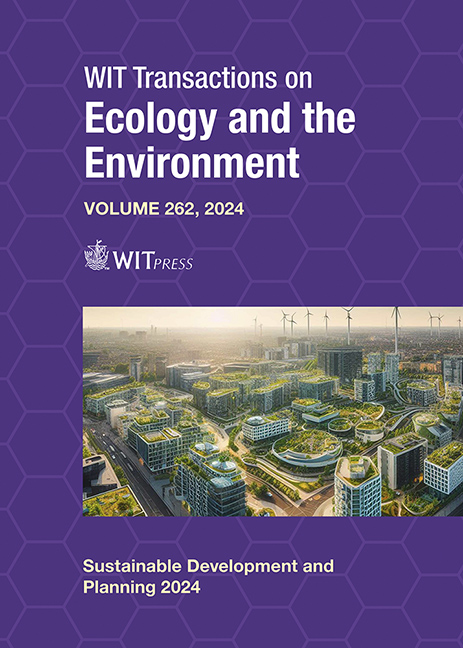ASSESSING ENERGY-SAVING RETROFIT AND CARBON FOOTPRINT REDUCTION OF RURAL DWELLINGS: A CASE STUDY IN TUSCIA, ITALY
Price
Free (open access)
Transaction
Volume
262
Pages
13
Page Range
821 - 833
Published
2024
Paper DOI
10.2495/SDP240681
Copyright
Author(s)
CARLO COSTANTINO, STEFANO BIGIOTTI, ALVARO MARUCCI
Abstract
In Italy, rural areas represent 60.9% of the national territory, with over 17.0% of the population residing there. Rural buildings across these territories are often historical; therefore, implementing conservative intervention measures to contain energy consumption, produce renewable energy and mitigate environmental impacts is crucial for achieving the climate neutrality goals by 2050. This paper aims to investigate the environmental impacts during a 60-year study period of 12 different thermal insulation solutions applied in the energetic refurbishment of a historical rural dwelling in Valentano, Italy, focusing on the carbon footprint and consumption of primary energy at certain life cycle stages (A1/A3 and C1/C3). The assessment is conducted in two phases: (i) in comparative terms between configurations, adopting the same functional unit (thermal transmittance of 0.193 ± 0.006 W/m2 K); and (ii) evaluating the intervention applied to the building, considering the avoided impacts in operational energy phase and the overall life cycle impact, cradle-to-grave. This study reveals a correlation between environmental impacts and the mass of material. In particular, the material with the least impact in terms of global warming potential is the flexible wood fibre (8.18 kgCO2eq/m2), while the solution with the overall least impact (considering other necessary materials) is the external thermal insulation composite system using EPS (20.53 kgCO2eq/m2) due to the reduced amount of insulation required. Furthermore, the environmental impact differences between configurations at the building scale are more limited, below 5%, highlighting the significant contribution from the operational phase in the life cycle (about 90%). In light of these results, intervention guidelines using renewable energy sources have been identified and evaluated. In particular, the combined use of heat pump, photovoltaic, and solar thermal systems achieves the zero-energy building standards and reduces emissions by about 80% compared to scenarios focused solely on insulation.
Keywords
rural building heritage, carbon footprint, energy-saving retrofit, zero-energy building, life cycle assessment, regeneration and restoration of rural structures, energy consumption, energy simulations





